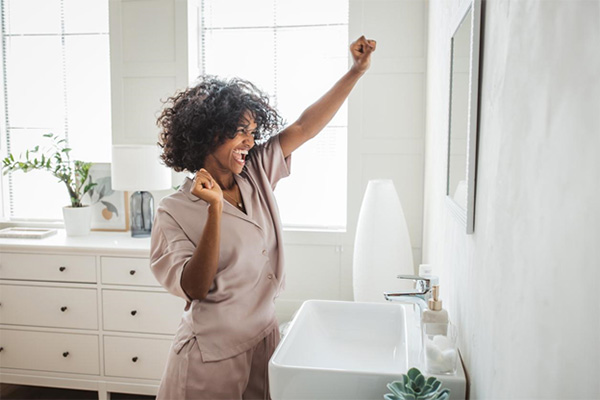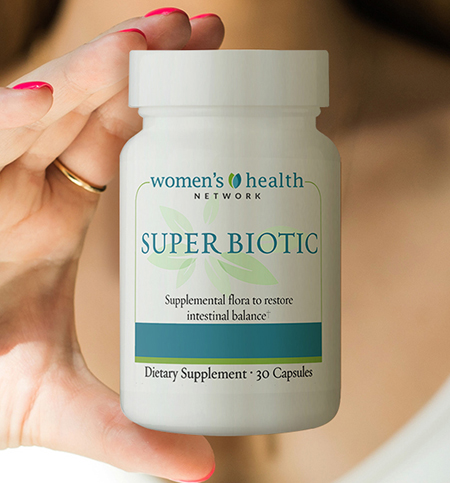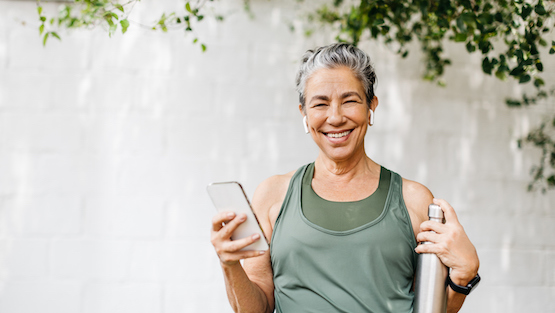Authored by WHN Editors

Experiencing more yeast infections lately?
Yeast lives naturally on your body, alongside beneficial bacteria that help keep the fungal microorganisms in check.
Most of the time, yeast’s presence is undetectable. However, when you’re under stress or experiencing the hormonal changes of perimenopause and menopause, imbalances can develop that enable yeast to grow and multiply in excess – especially in the moist and delicate tissues of the vaginal folds, creating a vaginal yeast infection. Other factors, like eating a high-sugar diet or recent antibiotic use, also contribute (often significantly) to yeast overgrowth.
Yeast infections are most often caused by a specific strain of yeast known as Candida albicans. Symptoms of a C. albicans yeast infection include itchiness, burning, discharge, tissue swelling, soreness and rash.
If you are currently battling a yeast infection, you probably want to know your alternatives beyond going back and forth to the pharmacy for more messy creams. The good news: you have lots of options! Here’s a look at some natural remedies that help eliminate yeast overgrowth and infections.
Coconut oil
Coconut oil is rich in caprylic acid, an antifungal fatty acid that can penetrate the cell walls of C. albicans, helping to quickly eliminate it. To try this remedy, topically apply a thin coating of coconut oil to the affected area. For a vaginal yeast infection, apply to vaginal lips and folds three times daily. Tip: use only unrefined organic coconut oil — it naturally brims with caprylic acid. (Check out our list of other natural antifungals.)
Tea tree oil
Tea tree oil’s main active component terpinene-4-ol helps wipe out the protective bacterial film that forms around C. albicans to help it to grow. Without this protective “cocoon,” yeast growth diminishes. Tea tree is an essential oil that can be harsh when directly applied to the skin. For best results, sprinkle a few drops in some coconut oil before applying to the skin. At your local natural food store, check if they sell natural tea tree oil suppositories for vaginal yeast infections.
Probiotics
Probiotics are known for promoting the balance of healthy bacteria in your body. They help maintain the equilibrium of microorganisms, which is crucial for preventing yeast overgrowth.
For your internal flora, supplement with a quality probiotic like the one we offer. If you have recently taken an antibiotic, this is a must to recolonize healthy bacteria. For topical relief, try applying plain yogurt to a yeast outbreak. Yogurt contains live probiotics, specifically lactobacillus acidophilus, which can help restore the natural balance of microorganisms in the vaginal area, stopping yeast infections. To apply yogurt, dip a tampon into freshly opened, plain (unsweetened), organic yogurt, then insert it into the vagina for 10 minutes, twice a day. This helps recolonize the vagina with healthy lactobacilli, which can then crowd out the yeast.
Baking soda
Baking soda helps to restore vaginal pH balance and create an environment where yeast can’t grow in overabundance. To turn your bath into a yeast-fighting dip, simply add ¼ cup of baking soda to the water and soak for 30 minutes up to twice a week. Bonus? A warm bath with a small amount of baking soda (sodium bicarbonate) can help soothe itching and irritation.
Stop feeding your yeast
Sugary foods and other refined carbohydrates actually feed yeast. Having lots of yeast infections is often a sign that you are eating too much sugar and simple carbs. Take a look at your diet and eliminate as many of these culprits as you can. Most likely you will not have to indefinitely give up these foods — just until you’ve effectively reset your internal terrain. Then you may be able to reintroduce yeast-friendly foods in reasonable amounts.
Boost intake of Vitamin B-3
Make sure you are getting enough Vitamin B-3, a vitamin that can reduce levels of infection-causing C. albicans cells by up to 67%, research reveals. Foods rich in Vitamin B-3 include chicken, beef, fish and brown rice. Just one serving (about 3 ½ oz.) of chicken contains 69% of the total amount of B-3 you need daily!
For so many women, it may seem like Monistat or Diflucan are going to become permanent fixtures on their bathroom shelves. If this is you, try not to get discouraged. There are so many things you can do to resolve yeast infections naturally and for good — and when you need extra support, we’re here to guide you along the way.
Still can’t find relief? Learn more about systemic yeast and how to defeat it.











